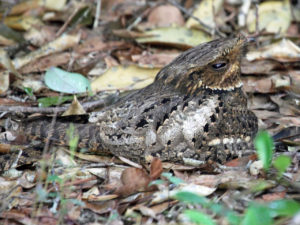Wildlife Wednesday: Gardening With Native Wildflowers
By the time you sit down to read this, Spring wildflowers will already be in bloom. Blessed as we are with temperate short winters, we are also blessed with an early and long blooming season for wildflowers in the Houston area. This is important to a wide variety of pollinators, animals who feed on flower nectar and pass pollen between flowers. It’s Important to resident animals to sustain themselves, and to migrants on their migratory journeys North. This not only happens in the wild, but is something we can contribute to, by planting and maintaining native wildflowers in pollinator gardens around our homes and businesses. With that in mind, lets have a look at a few species you can easily grow in the garden.
First, let’s define the terms discussed here. “Wildflowers” refers to plants that normally grow on their own out in nature, without needing our care, and not flowers whose current forms have been developed in the nursery industry. For our purposes, if a flower is generally unchanged from its wild form, even if bought at a nursery, we’ll call it a wildflower.
“Native” simply means that its from this region (ie. “Texas native”). Native, and generally unchanged in form (unlike some nursery trade cultivars) is important, because many of our native pollinators already know how to use and feed from native plants, and may not know how to navigate certain flowers from elsewhere. This renders some garden plants as pretty, but generally unhelpful to wildlife.
Indian Blanket (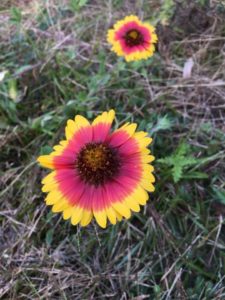 Gaillardia pulchella) aka Firewheel is a colorful relative of daisies and sunflowers. Popular with bees and butterflies, these showy flowers bloom from late February through December. The long blooming period of this annual, hardiness, and wide appeal to a variety of pollinators make it perfect for home gardens. They only grow 1 – 2 ft tall.
Gaillardia pulchella) aka Firewheel is a colorful relative of daisies and sunflowers. Popular with bees and butterflies, these showy flowers bloom from late February through December. The long blooming period of this annual, hardiness, and wide appeal to a variety of pollinators make it perfect for home gardens. They only grow 1 – 2 ft tall.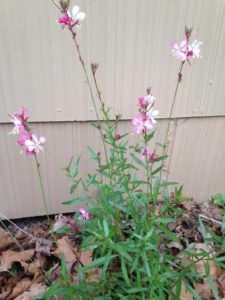
Butterfly Gaura (Gaura lindheimeri), as the name would suggest, is popular with a number of butterfly species. They grow tall flower stems topped with delicate white and pink flowers. It goes well behind other shorter plants, and is tolerant of full sun and part shade. Guara blooms from April to November.
Lemon Beebalm (Monarda citriodora) and 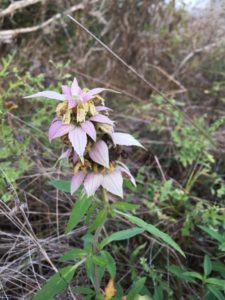 (Monarda punctata) are both very popular with large bees and butterflies, and they are gorgeous complex flowers. Beebalms grow from April – July. They’re in the mint family, and have a history of medicinal use. They are perennials, coming back from root stock the next season.
(Monarda punctata) are both very popular with large bees and butterflies, and they are gorgeous complex flowers. Beebalms grow from April – July. They’re in the mint family, and have a history of medicinal use. They are perennials, coming back from root stock the next season.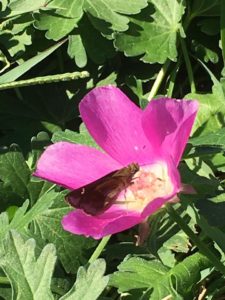
Winecups (Callirhoe involcrata) are native ground creeping mallow (Hibiscus) that grows open shallow wine colored flowers that are appealing to a wide variety of bees, beetles, an smaller butterflies that may not be able to feed from some larger or deeper flowers. Each plant grows 8-12 inches tall and spread out to 3 feet. Its a perennial that grows through the Spring, and again in late summer and early fall.
March is a good time to get these plants in the ground, or plant seeds for flowers coming up in late Spring, Summer, and Fall. Check your locally owned nurseries for native plants, and check out the leftover plants from last weekend’s Bellaire Garden Club plant sale, still available in our back 40 area, at the Nature Discovery Center.
Also, call the Center for more details about upcoming nature hikes at 713.667.6550.
Thanks for joining us, and see you out in the park!
Eric Duran
Staff Naturalist
Photographs by Eric Duran (Top-most image is of Aquatic Milkweed, Asclepias perennis, a native milkweed, that is beginning to bloom at the edge of the pocket prairie garden in the park. It’s difficult to find for sale, but its worth planting for the Monarchs, if you do find it!)


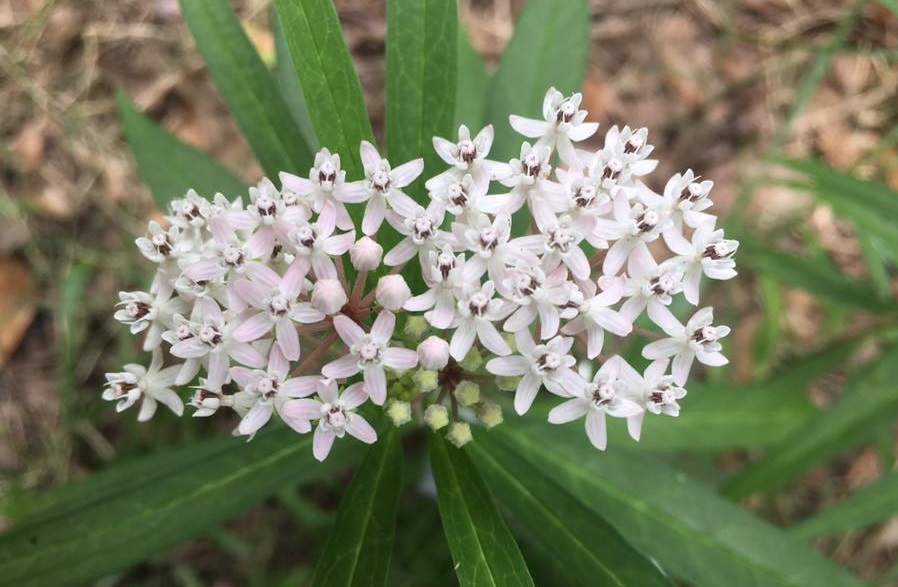
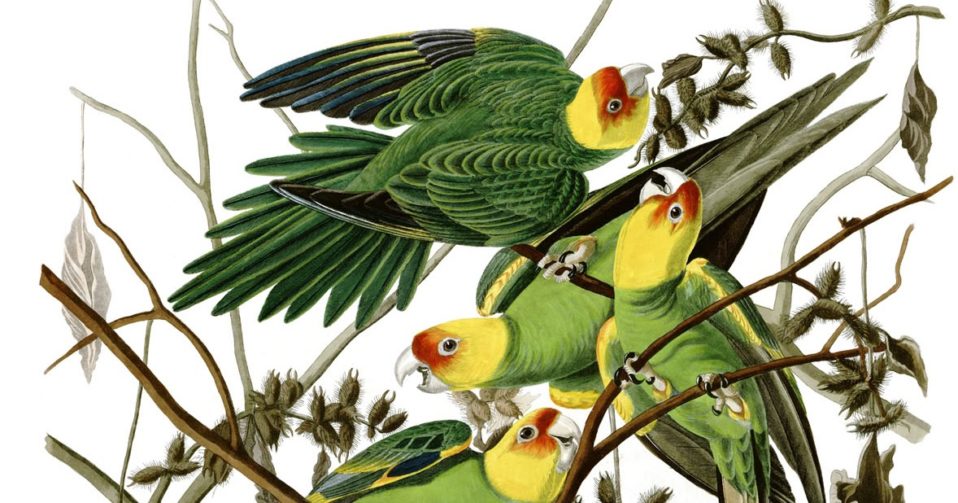
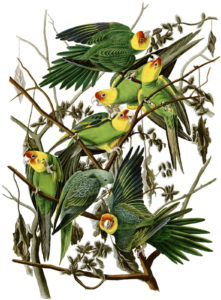 At one time, believe it or not, we had a common and colorful parrot, found across the central and Eastern United States, ranging from Southern New England, west to Colorado, and south to Texas along the Gulf Coast to the tip of Florida. The Carolina Parakeet (Conuropsis carolinensis) could be found in temperate and sub-tropical areas of the country, and was the Northernmost parrot in the Americas. They ate mostly large seeds and small fruits. Its thought that their habit of eating poisonous cocklebur seeds may have made the birds themselves poisonous, protecting them from predators. These parakeets were gregarious, living in groups of 200-300 birds. They nested in old hollow trees, using species such as Sycamore and Bald Cypress, in old growth forests, along the edges of wetlands.
At one time, believe it or not, we had a common and colorful parrot, found across the central and Eastern United States, ranging from Southern New England, west to Colorado, and south to Texas along the Gulf Coast to the tip of Florida. The Carolina Parakeet (Conuropsis carolinensis) could be found in temperate and sub-tropical areas of the country, and was the Northernmost parrot in the Americas. They ate mostly large seeds and small fruits. Its thought that their habit of eating poisonous cocklebur seeds may have made the birds themselves poisonous, protecting them from predators. These parakeets were gregarious, living in groups of 200-300 birds. They nested in old hollow trees, using species such as Sycamore and Bald Cypress, in old growth forests, along the edges of wetlands. 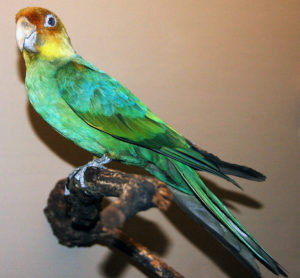
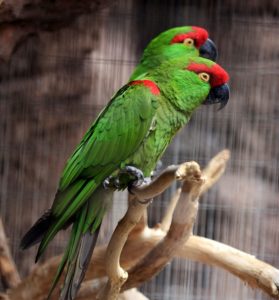
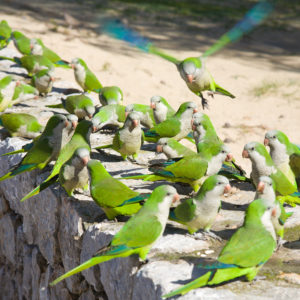
 Besides Monk Parakeets, and the occasional escaped Budgie, released Red-masked parakeets live in San Francisco, and various species of Amazon parrots live in South Texas and Southern Florida. Red-crowned parrots and Green Parakeets nest in the most Southern parts of the Rio Grande Valley of Texas, though its not clear if they are released pets, or whether Mexican populations have begun to creep slowly into the U.S.
Besides Monk Parakeets, and the occasional escaped Budgie, released Red-masked parakeets live in San Francisco, and various species of Amazon parrots live in South Texas and Southern Florida. Red-crowned parrots and Green Parakeets nest in the most Southern parts of the Rio Grande Valley of Texas, though its not clear if they are released pets, or whether Mexican populations have begun to creep slowly into the U.S.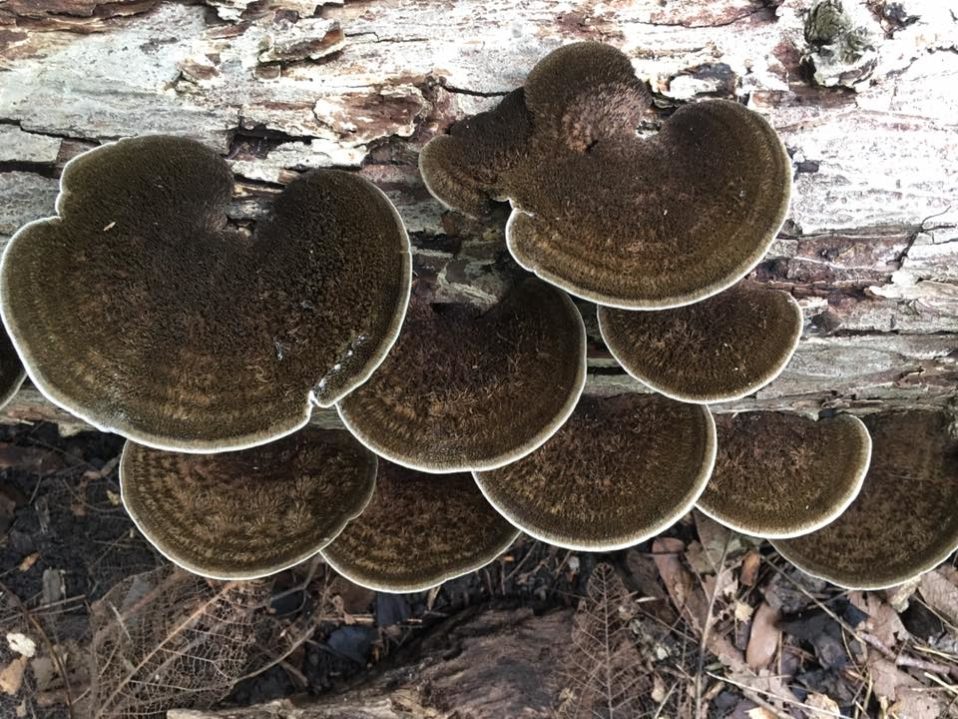
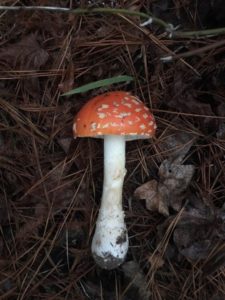 The bright red Fly Agaric (Amanita muscaria) is perhaps the most iconic of mushrooms. Ask a lot of people to draw a mushroom, and this is the species that may come to mind, though not everyone may know the name. This mushroom is famously hallucinogenic, but can also be somewhat toxic (so I would avoid consuming it). The name comes from the old practice of using this mushroom to ward off flies. Fly agarics are symbiotic with pine trees, and have a wide range across the Northern Hemisphere. One of the varieties that grows in our Texas pine forests may be a pale yellow.
The bright red Fly Agaric (Amanita muscaria) is perhaps the most iconic of mushrooms. Ask a lot of people to draw a mushroom, and this is the species that may come to mind, though not everyone may know the name. This mushroom is famously hallucinogenic, but can also be somewhat toxic (so I would avoid consuming it). The name comes from the old practice of using this mushroom to ward off flies. Fly agarics are symbiotic with pine trees, and have a wide range across the Northern Hemisphere. One of the varieties that grows in our Texas pine forests may be a pale yellow.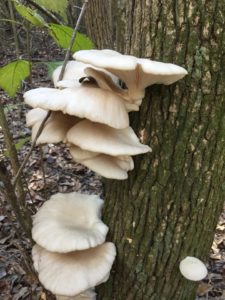
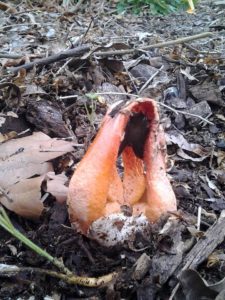 A rather strange looking mushroom that may pop up in your yard is the Columnar Stinkhorn (Linderia columnatus). They usually grow from soil with a lot of dead organic matter or hardwood mulch, so they’re usually seen in flower and landscaping beds. Besides the distinctive white egg like structure from which they seem to emerge, the spongy orange squid like tentacles, joined at the top, are rather unique. When the mushroom forms its slimy dark green spore mass inside the columnar arms, it takes on a nasty odor, reminiscent of feces and rotting carcass. The various species of stinkhorn fungi (ie. Columnar, Lattice, and stinky squid) attract flies with these odors to spread their spores to new locations.
A rather strange looking mushroom that may pop up in your yard is the Columnar Stinkhorn (Linderia columnatus). They usually grow from soil with a lot of dead organic matter or hardwood mulch, so they’re usually seen in flower and landscaping beds. Besides the distinctive white egg like structure from which they seem to emerge, the spongy orange squid like tentacles, joined at the top, are rather unique. When the mushroom forms its slimy dark green spore mass inside the columnar arms, it takes on a nasty odor, reminiscent of feces and rotting carcass. The various species of stinkhorn fungi (ie. Columnar, Lattice, and stinky squid) attract flies with these odors to spread their spores to new locations.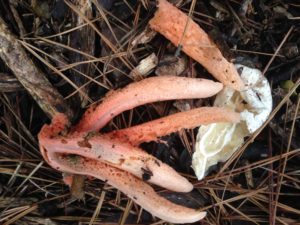
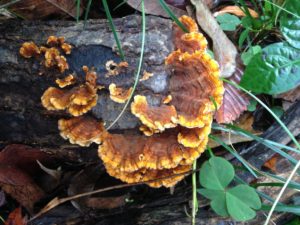
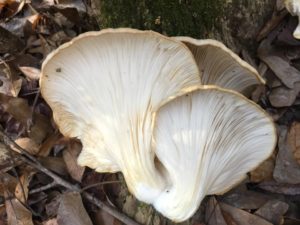
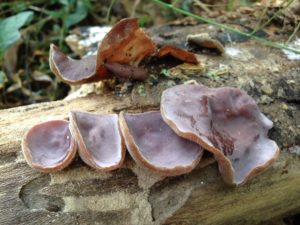

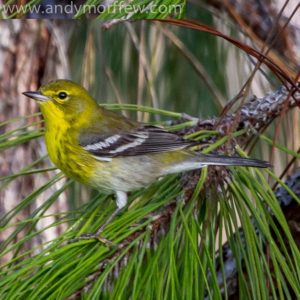
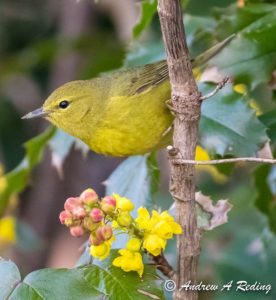
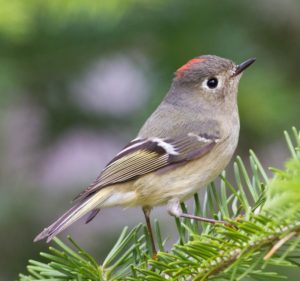
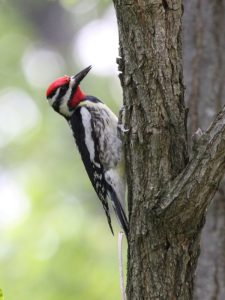
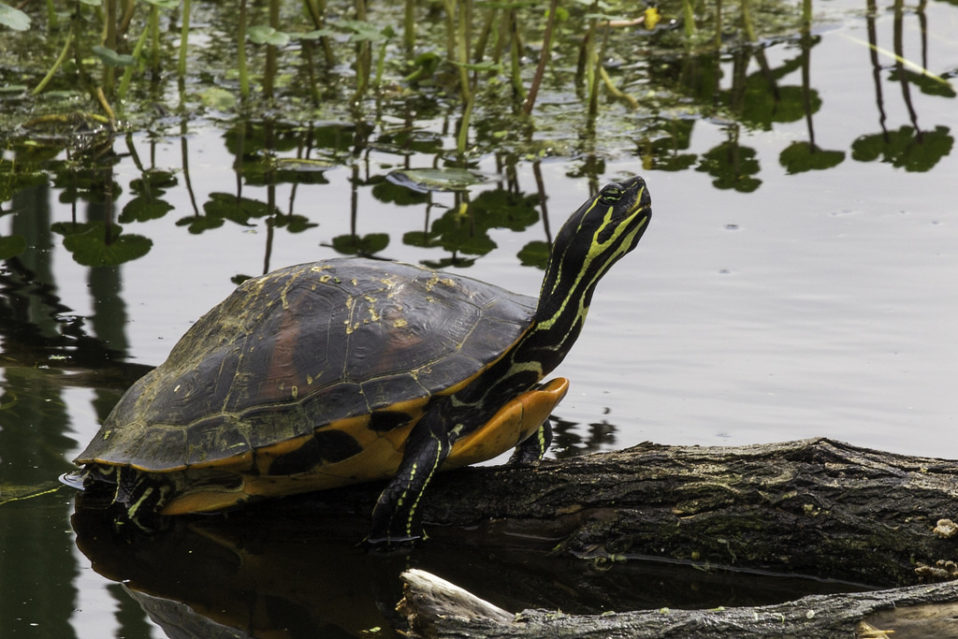
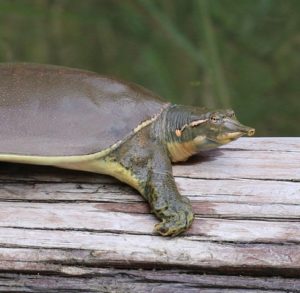
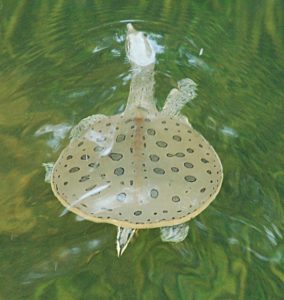

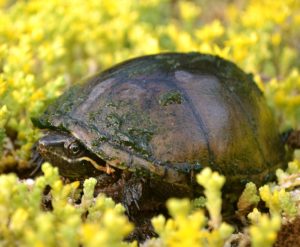
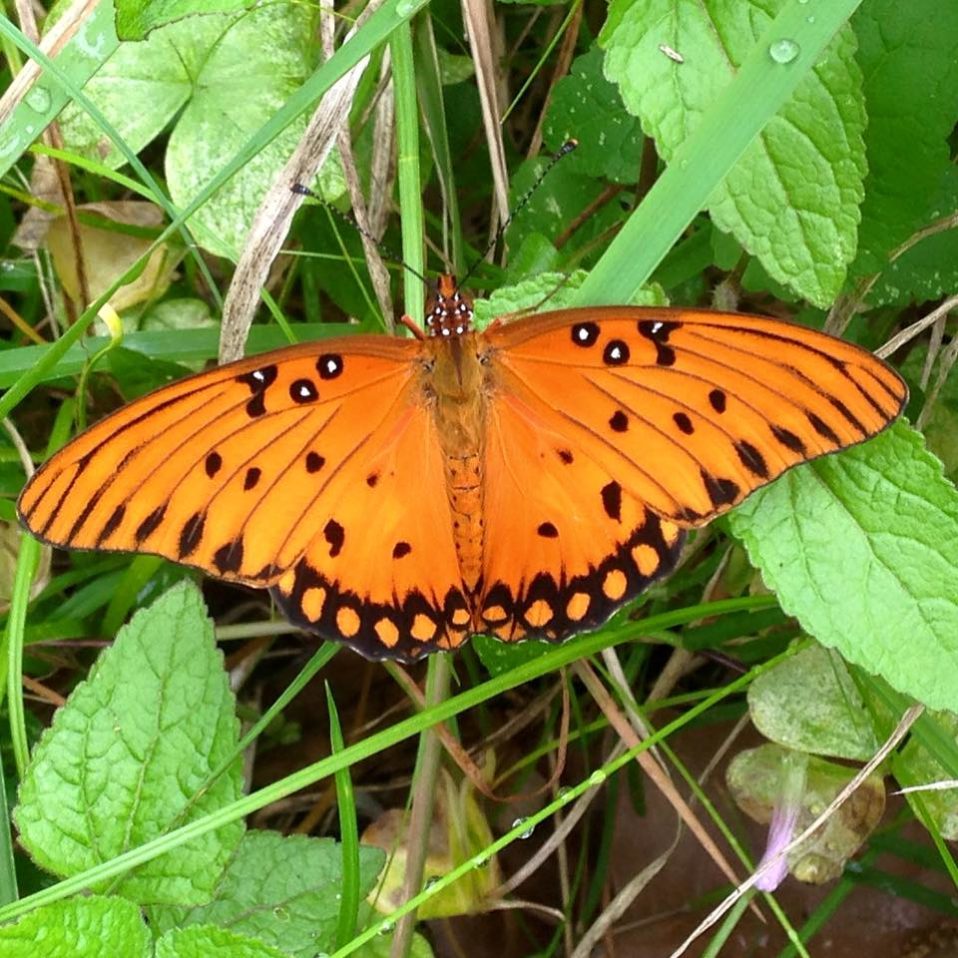
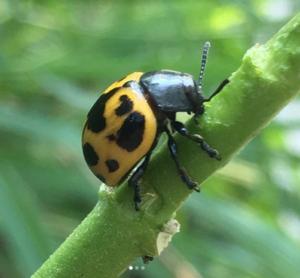 Most people who grow Mexican Milkweed in their gardens expect Monarch Butterflies, and even the tiny yellow milkweed aphids, on their milkweed plants, but we were surprised to notice, a couple of years ago, that our herb garden milkweed had also attracted bright yellow and black Milkweed Leaf Beetles (Labidomera clivicollis). Like monarch caterpillars, these round conspicuous beetles feed on the poisonous leaves of the milkweed, and are therefore toxic to predators, as well. The
Most people who grow Mexican Milkweed in their gardens expect Monarch Butterflies, and even the tiny yellow milkweed aphids, on their milkweed plants, but we were surprised to notice, a couple of years ago, that our herb garden milkweed had also attracted bright yellow and black Milkweed Leaf Beetles (Labidomera clivicollis). Like monarch caterpillars, these round conspicuous beetles feed on the poisonous leaves of the milkweed, and are therefore toxic to predators, as well. The 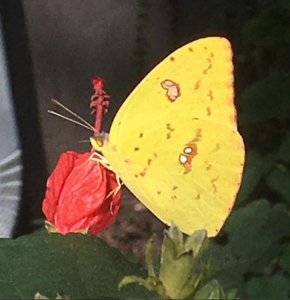 beetles come on black and yellow, black and red, and black and orange.
beetles come on black and yellow, black and red, and black and orange.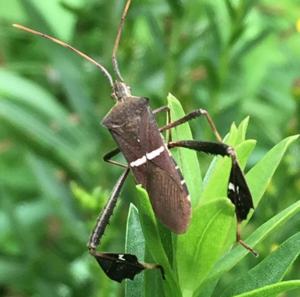 stern Leaf-footed Bugs (Leptoglossus phyllopus) are one of 3 common leaf-footed bugs that are found in our park throughout the year. We’ve seen the adults, and the red wingless nymphs prowling around plants in the garden. They feed on plants by piercing them with a straw-like proboscis and sucking juices out of the plant. The inject chemicals into the plants to aid in feeding, and these secretions may be somewhat toxic to the plant. In small amounts, this isn’t harmful, but in large numbers may kill the plant.They are harmless to people, but they may release a foul smelling substance when bothered.
stern Leaf-footed Bugs (Leptoglossus phyllopus) are one of 3 common leaf-footed bugs that are found in our park throughout the year. We’ve seen the adults, and the red wingless nymphs prowling around plants in the garden. They feed on plants by piercing them with a straw-like proboscis and sucking juices out of the plant. The inject chemicals into the plants to aid in feeding, and these secretions may be somewhat toxic to the plant. In small amounts, this isn’t harmful, but in large numbers may kill the plant.They are harmless to people, but they may release a foul smelling substance when bothered.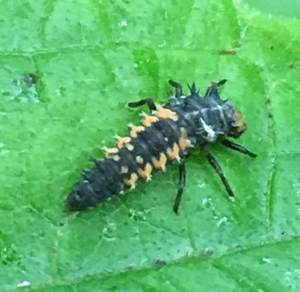
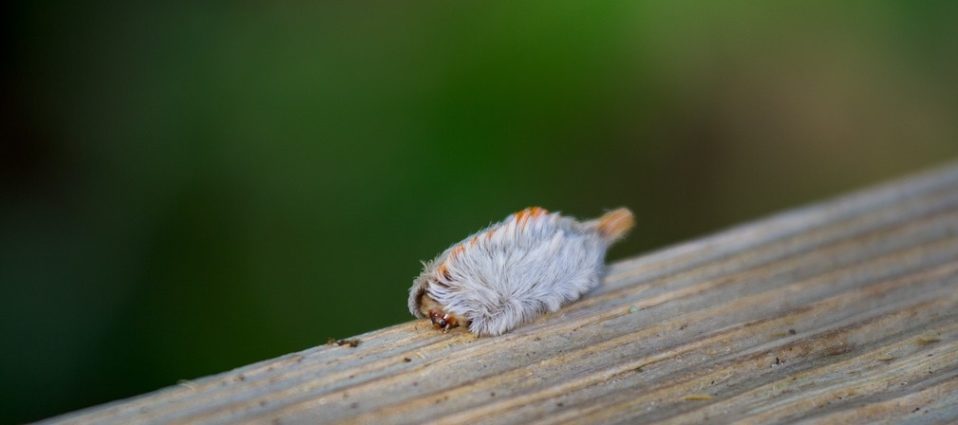
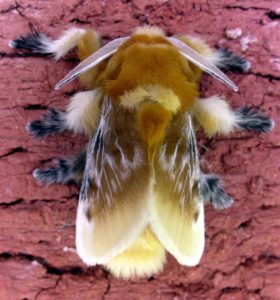
 The most infamous of our stinging caterpillars is the Asp or the caterpillar of the Southern Flannel Moth (Megalopyge opercularis, pictured right). Asps usually emerge from their eggs in mid to late Autumn, and are commonly found in or near hardwood trees, shrubs, and vines. They feed on the leaves of these plants, and wander around constantly, looking for food, and eventually for decent locations to make their cocoons. They may be various shades of brown and gray, with a fur ridge down the middle of the back.
The most infamous of our stinging caterpillars is the Asp or the caterpillar of the Southern Flannel Moth (Megalopyge opercularis, pictured right). Asps usually emerge from their eggs in mid to late Autumn, and are commonly found in or near hardwood trees, shrubs, and vines. They feed on the leaves of these plants, and wander around constantly, looking for food, and eventually for decent locations to make their cocoons. They may be various shades of brown and gray, with a fur ridge down the middle of the back. 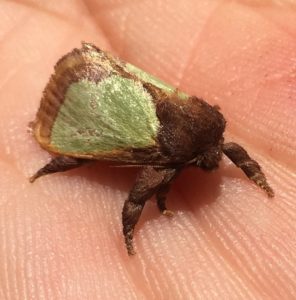
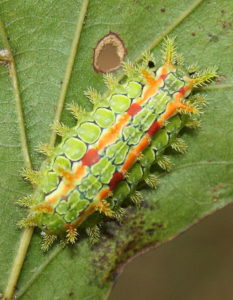 The Spiny Oak Slug (Euclea delphinii) is the caterpillar of an adorable furry little green and brown cup moth (pictured above right). While the caterpillar is really quite beautiful with its intricate designs of yellow and green or brown and orange, the pain from the stings is not at all adorable. These small spiny larvae (growing to only 2 cm long) feed on a wide variety of leaves from deciduous trees, bushes, and vines. In the South, they have 2 generations, one in the Summer, and another active in Fall.
The Spiny Oak Slug (Euclea delphinii) is the caterpillar of an adorable furry little green and brown cup moth (pictured above right). While the caterpillar is really quite beautiful with its intricate designs of yellow and green or brown and orange, the pain from the stings is not at all adorable. These small spiny larvae (growing to only 2 cm long) feed on a wide variety of leaves from deciduous trees, bushes, and vines. In the South, they have 2 generations, one in the Summer, and another active in Fall.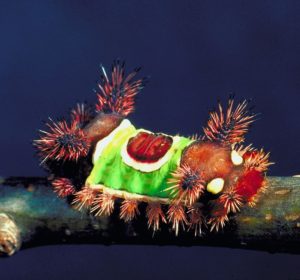
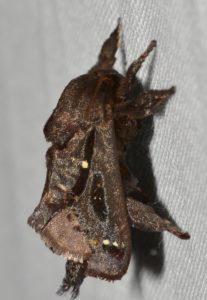 Well, we hope this little mini-guide to stinging Fall caterpillars helps you stay safe out in your yard, garden, and out in area parks in the coming weeks. Though painful at times, they are important herbivores in our native ecosystems, and they really can be quite beautiful and even endearing.
Well, we hope this little mini-guide to stinging Fall caterpillars helps you stay safe out in your yard, garden, and out in area parks in the coming weeks. Though painful at times, they are important herbivores in our native ecosystems, and they really can be quite beautiful and even endearing.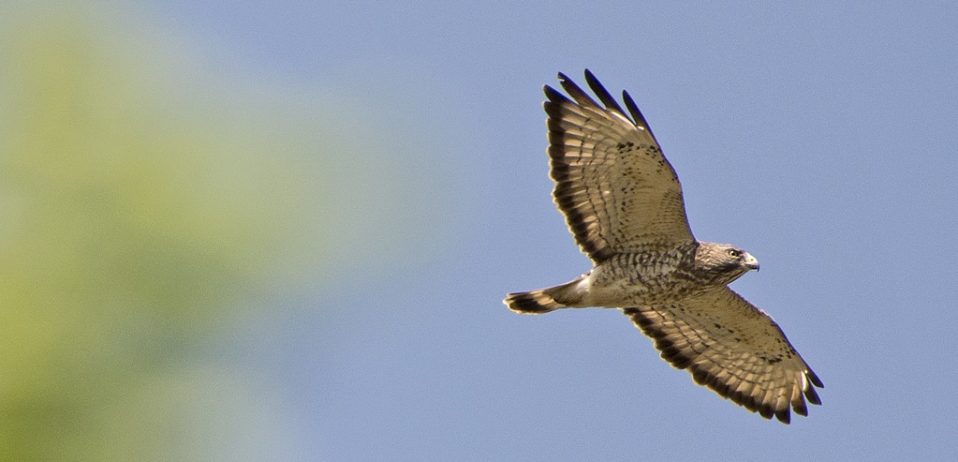
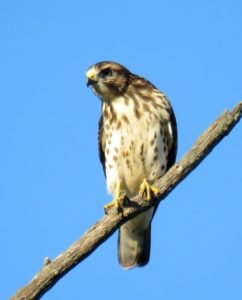
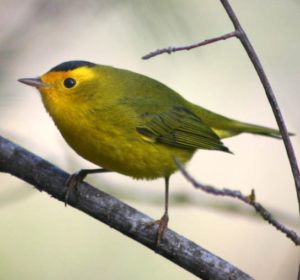
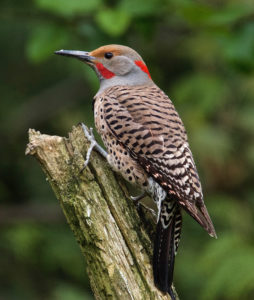
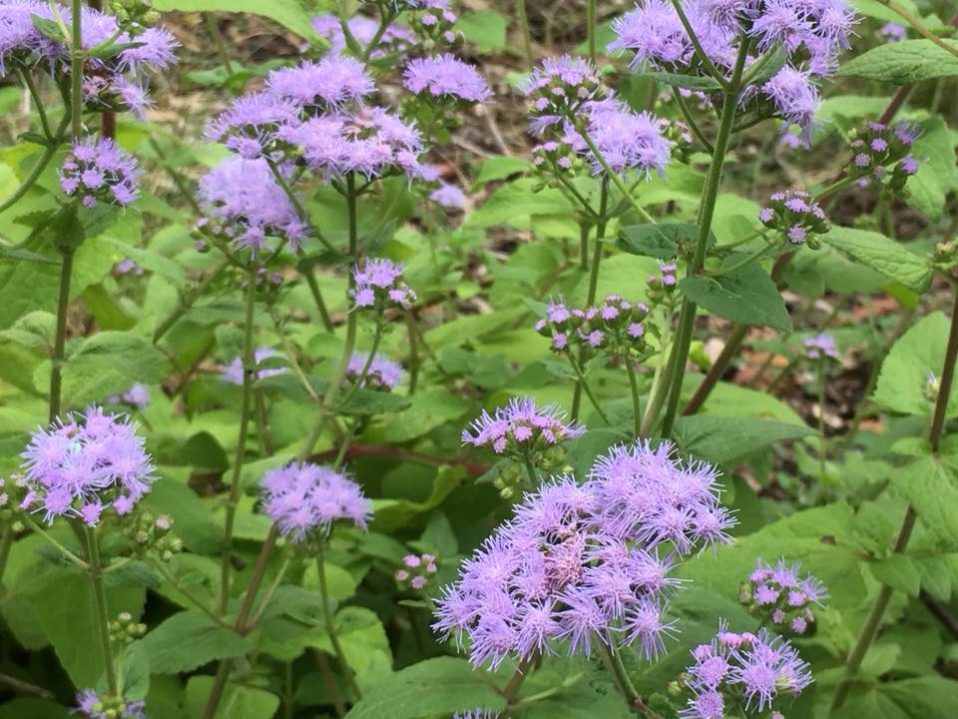
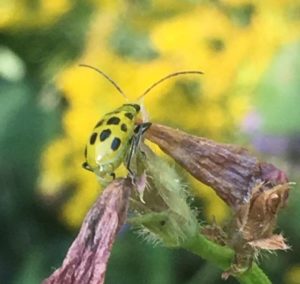 People don’t usually think of beetles as pollinators, but we’ve recently found Spotted Cucumber Beetles (
People don’t usually think of beetles as pollinators, but we’ve recently found Spotted Cucumber Beetles (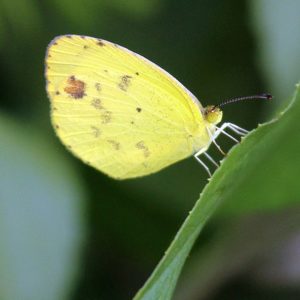
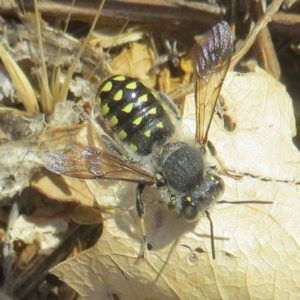 Wool Carder Bees (Anthidium maculosum) are solitary bees, and are just a bit shorter than honeybees, but thicker-bodied. Unlike honeybees, the males males are larger than the females and territorial, and they survive after mating. The females mate with various different males, and establish a nest to lay eggs and raise young by themselves. They are referred to as “carder bees”, because of their habit of gathering plant hairs and fibers to construct their nests.
Wool Carder Bees (Anthidium maculosum) are solitary bees, and are just a bit shorter than honeybees, but thicker-bodied. Unlike honeybees, the males males are larger than the females and territorial, and they survive after mating. The females mate with various different males, and establish a nest to lay eggs and raise young by themselves. They are referred to as “carder bees”, because of their habit of gathering plant hairs and fibers to construct their nests.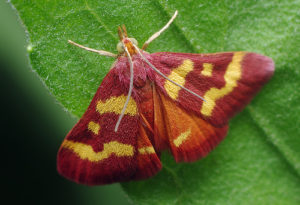
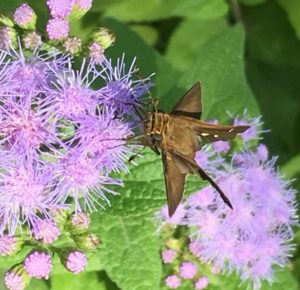 Well, we hope you enjoyed our mini review of some of the insects that have been visiting our Mistflower, here at the Nature Discovery Center. Also, we hope you will consider this beautiful and robust plant for your own home garden, both as decoration and food for wild pollinators.
Well, we hope you enjoyed our mini review of some of the insects that have been visiting our Mistflower, here at the Nature Discovery Center. Also, we hope you will consider this beautiful and robust plant for your own home garden, both as decoration and food for wild pollinators.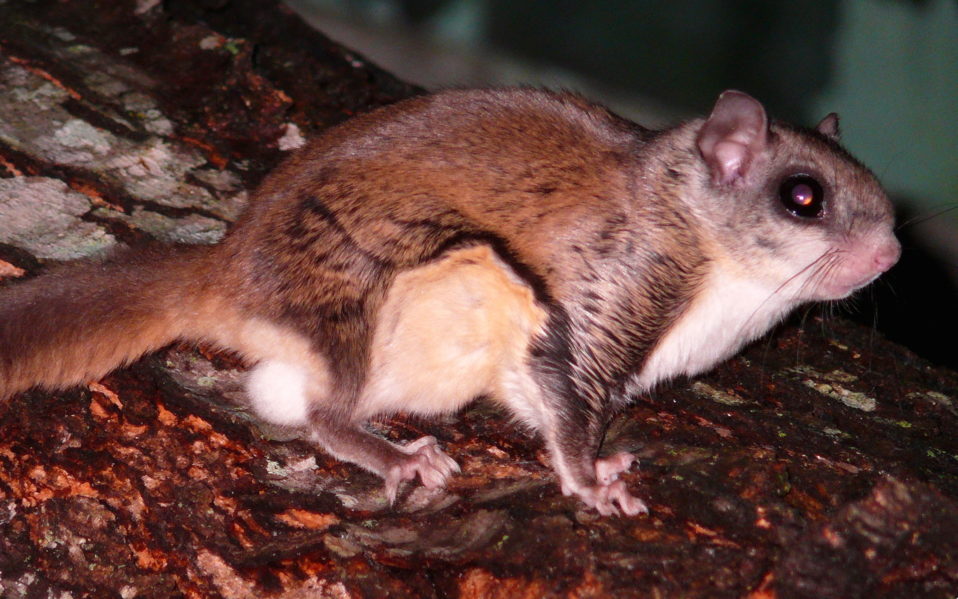
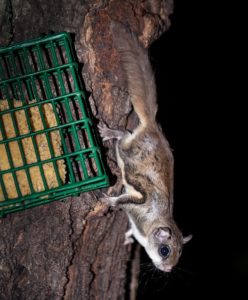 Southern Flying Squirrels (Glaucomys volans) usually pass underneath our radar, as the only nocturnal tree squirrel in our area. That’s right, a nocturnal squirrel! Flying squirrels don’t actually fly, the way that bats, birds, and insects can, but rather they glide using skin flaps between the front and back legs. They are incredibly adept at controlling the direction of their glide by adjusting these flaps. Each flap is called a patagium. Like other tree squirrels, flying squirrels eat mainly seeds and nuts, and supplement their diet with insects and small vertebrates occasionally. they nest or shelter in tree holes, like old woodpecker nests and natural hollows formed from the scars of fallen branches. They’re our smallest squirrels, with a body length of only about 5 inches.
Southern Flying Squirrels (Glaucomys volans) usually pass underneath our radar, as the only nocturnal tree squirrel in our area. That’s right, a nocturnal squirrel! Flying squirrels don’t actually fly, the way that bats, birds, and insects can, but rather they glide using skin flaps between the front and back legs. They are incredibly adept at controlling the direction of their glide by adjusting these flaps. Each flap is called a patagium. Like other tree squirrels, flying squirrels eat mainly seeds and nuts, and supplement their diet with insects and small vertebrates occasionally. they nest or shelter in tree holes, like old woodpecker nests and natural hollows formed from the scars of fallen branches. They’re our smallest squirrels, with a body length of only about 5 inches.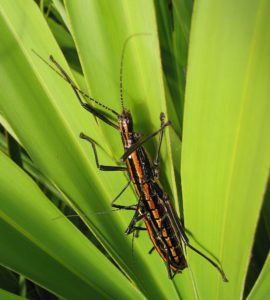
 Mediterranean Geckos (Hemidactylus turcicus), as the name would suggest, are not from around here, but rather are originally from the Mediterranean coastal region of North Africa. Through shipping and international trade, they have been spread from there to coastal areas around the world. They have an especially vibrant population in the Houston-Galveston area of Texas, but can be found in larger cities around the state, like San Antonio, Austin, and Dallas, as well. They are our only nocturnal lizard. As with most geckos, they climb exceptionally well, and feed on insects and other invertebrates.
Mediterranean Geckos (Hemidactylus turcicus), as the name would suggest, are not from around here, but rather are originally from the Mediterranean coastal region of North Africa. Through shipping and international trade, they have been spread from there to coastal areas around the world. They have an especially vibrant population in the Houston-Galveston area of Texas, but can be found in larger cities around the state, like San Antonio, Austin, and Dallas, as well. They are our only nocturnal lizard. As with most geckos, they climb exceptionally well, and feed on insects and other invertebrates.